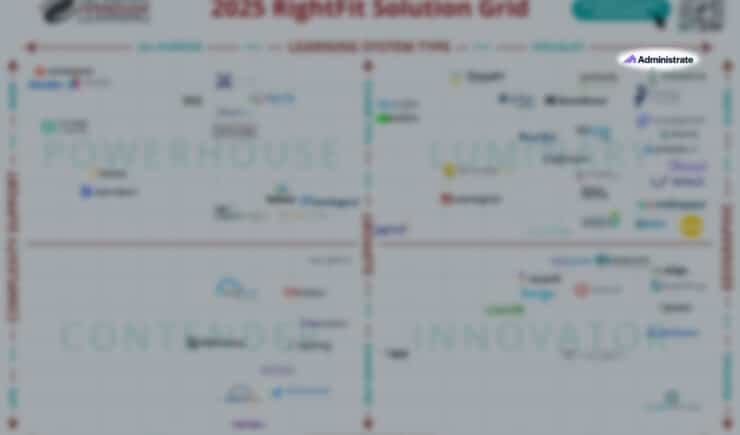Buying software can be one of the trickiest processes that you have to navigate as a business, but to make sure you always have the best tools available to your team, it is something you will have to go through. Therefore, it’s essential to know how to make the whole process as smooth and straightforward as possible.
Making tech stack changes to your business is always to going mean a bit of disruption and changes to your current processes, but if you can keep these to a minimum, it will make the entire swap simple and ensure that your team can continue to do the work that is needed of them.
We’ve pulled together the main things you need to consider when making changes to your tech stack to ensure your business can keep working as usual.
If you’re looking for an in-depth guide to share with your team, we’ve also got that for you. Download our ‘How to Buy Software’ guide here.
Set Clear Deadlines
 If you’re making the switch from one piece of software to a new one or even condensing lots of old systems into one new one, it’s vital to set clear deadlines for each stage of the process, so your team always knows what is going on.
If you’re making the switch from one piece of software to a new one or even condensing lots of old systems into one new one, it’s vital to set clear deadlines for each stage of the process, so your team always knows what is going on.
This means you need to inform your team of things like when the new software will be available for use, when the cutoff for the old software is, when data will be deleted from the old software, and anything else that you think is important.
Making these deadlines clear from the beginning will set clear expectations with your staff members, and will mean everyone is on the same page when it comes to moving over to the new system.
Keep Everyone Informed
Much like setting deadlines, it’s important to keep everyone in your business informed of the process as you go along. Again, this will keep everyone on the same page, and people will know what is expected of them at different stages of the process.
The information may be different depending on the level of each staff member, or which team they are on, so it’s essential to tailor your message to fit your audience. For example, managers may need more information on the details of the swap and may have tasks they need to complete to get their team up to speed.
Plan Data Moves

That’s why you must plan the data moves in advance and communicate this to your team. Ensure you know who is moving which chunks of data. You may want to split them by department or get people to be responsible for their own personal data to ensure everything is moved correctly. Whatever way works best for your business, you need to set clear deadlines for when you need all the data to be moved across, and when you expect people to start solely using the new system. Once data has been securely transferred to your new system, you may want to create a backup of it, and then delete it from your old system to prevent staff members from still using the old software by mistake.
Provide Training
If you want your staff members to get up to speed with a new piece of software as quickly and seamlessly as possible, then you need to provide software training. This will ensure that all your staff members are knowledgeable in the new system and will feel comfortable using it as part of their job, rather than feeling stressed about leaving their usual way of working behind.
You can either hold in-person training sessions or make an eLearning course available to your team members to complete. Either way, it’s important to track who has completed the training to ensure everyone in your business is up to speed with the new way of working.
Have you seen Administrate’s award-winning LMS? Not only is it great for running internal training courses for your team, but it makes tracking your internal training a breeze.
Designate Software Experts
Training sessions may not be enough to cover every question and problem that comes up as part of the software buying process. Therefore, it’s a good idea to select some software experts in your business to be on hand to help with any problems which may arise.
Your software experts should be involved in the software implementation process from the beginning to ensure they are entirely familiar with the new system. They should also attend any training sessions or implementation calls with your software implementation team. This means if anyone in your organization is having issues or needs a quick answer to a question, there will be someone internally who they can ask. This will mean that any problems can be dealt with quickly, and your staff members will feel confident that they always know who to ask for help.
Update Your Knowledge Base
Finally, you’ll want to make sure that you update your knowledge base to reflect the new processes and procedures that have been put in place. Again, this will help with the transition stage as your staff members will know where to look to find the information they need.
Make sure you communicate clearly to your team that the knowledge base has been updated, and if you’ve changed the structure of anything they are used to, so it will make finding the new information they require as easy as possible.
Support Your Success With New Software
If you’re looking to buy new software for your business, then you may need some tips on how to pick the best software to fit your needs. Our training management experts have compiled a guide on the three critical things you need to know about buying software, so you can feel prepared when proposing a new software purchase.
Get the GuideGet an Expert Perspective
If you’d like an expert perspective on choosing the right training management software and the software implementation process, no-obligation consultations with our training management experts are available! Schedule a meeting today.



.png)



